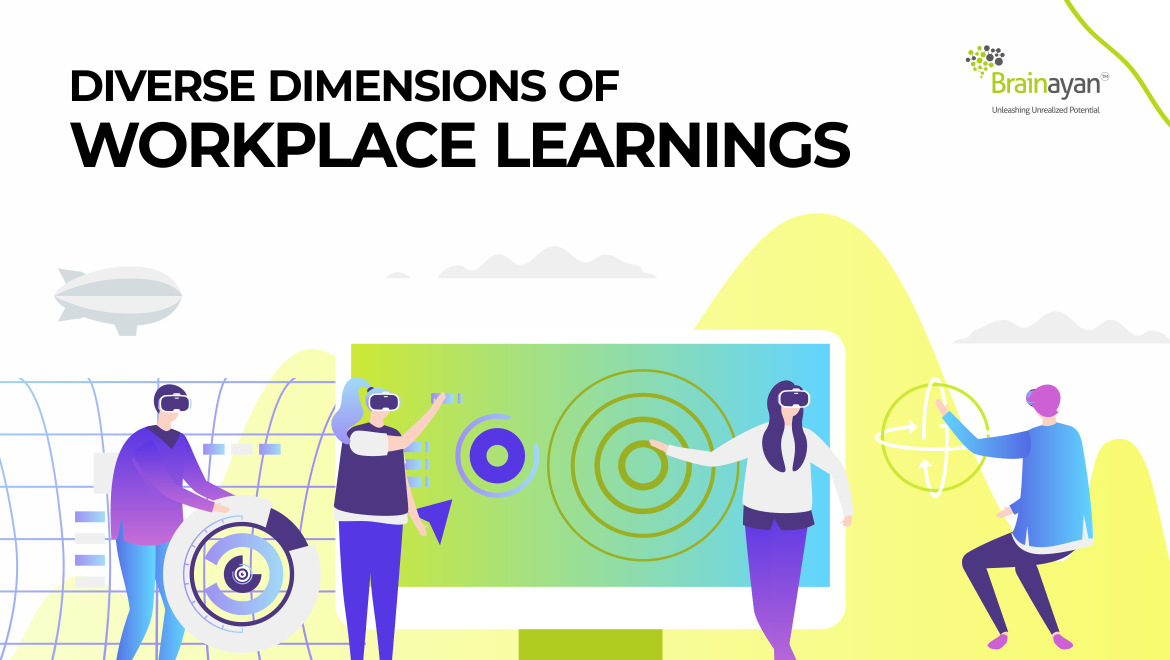The urgency of work invariably trumps the luxury of learning. But what if we could make learning more a part of our day-to-day jobs? With the advent of AI, lifelong learning has become imperative for the fear of AI taking away all the jobs! To build a resilient & an adaptable future workplace learning has become crucial to all of us.
Amidst advancing technology, organizations feel the urgency to upskill their workforce. McKinsey reports 87% of executives face skill gaps. “I am still learning.” Michelangelo said at 87! But the real question is how do we learn? How do we be consistent at learning and applying what was learnt. Everyone is unique and experience the same things differently. Workplace learning just doesn’t build jobs; it motivates people and hence, it is pertinent that we place it on top priority.
Probably the most natural & ancient way to learn new things is through thorough observation. Yet traditionally, learning has been directed towards schools, colleges and universities. Workplace learning is affected by two major factors – 1) How organisations can afford or deny the learning opportunities and 2) How an individual / employee engages with this opportunity? While most of us prefer and are traditionally groomed to be in class with a facilitator, not all of us have that as a preferred style of learning. As individuals, we use our sensory abilities to gauge and store knowledge. For instance, a visual learner may not be able to be grasp the knowledge effectively if he/ she is forced to listen to a podcast or made to watch a pre-recorded video. Hence, Understanding the learning styles is equally important.
While most organisations prefer formal methods like schools, classroom trainings, assessments and handing out certifications or awards after the completion, modern day learning methods include experiential learnings, self-paced learning programs, topics of learner’s choice. Workplace learning can be made more effective if it becomes a part of everyday life. Learning in the flow of work may be seen as a new concept, but in reality, it has been an inherent part of human development for centuries. Throughout history, individuals have acquired knowledge and skills through on-the-job training, apprenticeships, and experiential learning. While technology and modern workplace dynamics have shaped how we approach learning today, the fundamental idea of learning while actively engaging in work tasks has always been present. It closely aligns with the concept of Individual Development Plans (IDPs). IDPs have long been recognized as effective tools for tailored professional growth. By integrating learning in the flow of work, IDPs are enhanced, providing a structured framework to pursue relevant learning opportunities within job responsibilities.
Practice metacognition which necessarily means being aware of your own thinking processes, understanding how you learn, and monitoring your thoughts. Also, practice mindfulness which is being fully present in the current moment and experience the current atmosphere without any judgement. Maintaining a learning list , scheduling a dedicated time for new trends & topics, contributing to the local talent pool and most importantly using technology to further advance your learning graph like using tech enabled customised tips, subscribing to newsletters and articles which spikes your interest are few ways to keep up your learning game.
Setting a new paradigm in the way we learn is a sure shot way to keep up with the constant changes in the technological boost. Give learners the autonomy and trust the employees to build their phases of development. Afterall humans have embodied the essence of learning, continually evolving and growing in pursuit of knowledge.
Happy Learning!

